Alternatives to SWOT analysis
Like most people in marketing or business development roles, I used to assume that a SWOT analysis was the best tool for any business strategy evaluation. It felt like a productive use of my time — a way to gather insights about all the risks and opportunities I might need to know about.
But while a SWOT analysis can still be useful at times, I’ve discovered that it’s actually pretty limited. It just gives you a snapshot view of a situation, and most of the time, it’s prone to oversimplifying challenges and amplifying bias.
Once you realize that, you start searching for alternatives to SWOT analysis — the kinds of frameworks that can give you more clarity. Over the years, I’ve tried a few options for different tasks, and some have been truly eye-opening.
Here’s a closer look at the strategic planning tools that might work for you if a SWOT framework just isn’t cutting it anymore.
SWOT analysis limitations: The case for considering alternatives
You (probably) know what a SWOT analysis is. It’s one of the most popular decision-making models in the business world, designed to help you identify the strengths, weaknesses, opportunities, and threats connected to your company or a project you’re exploring.
SWOT is pretty much the industry standard when you’re evaluating where your organization sits in an industry or environment. But honestly, it has a bunch of flaws that can trip you up if you lean on it too much. Here are five of the worst:
- It’s frozen in time: SWOT is basically a snapshot. You go through all the SWOT analysis steps meticulously, and then five minutes later a regulation changes or your competitor announces a new product. Suddenly, your beautiful grid is outdated. If you work in any industry where things move quickly, this is a real headache.
- Everyone has an opinion: One person’s “strength” is another person’s “wishful thinking.” I’ve sat in meetings where people argued for an hour over whether our pricing was a strength or a weakness. It gets subjective fast, especially if no one brings actual data to back up their claims.
- It doesn’t tell you what matters most: You can fill out every single square and still have no clue which issue deserves your attention first. There’s no built-in way to weigh factors or sort them by impact, so you end up with a big list and zero priorities.
- It barely scratches the surface of external factors: Sure, you’ve got “opportunities” and “threats,” but it’s all pretty high-level stuff. You don’t really dig into things like economic shifts or cultural trends that could completely reshape your market.
- It stops at description: Even when you’ve done a thorough SWOT, the next step is often unclear. I’ve lost count of how many times teams have looked around the room after filling it out and said, “Okay…so what do we actually do with this?”
If you’ve ever felt like SWOT leaves you with more questions than answers, you’re not imagining it. That’s exactly why so many teams end up trying other strategic planning tools to help them go deeper and actually make decisions they can act on.
10 Alternatives to SWOT analysis for strategic planning
I’ve spent enough time in marketing, sales, and business leadership roles that I’ve probably encountered dozens of strategic planning frameworks over the years. Some I tried once and never used again. Others are part of my workflow most months.
Each tool that I’m about to share with you gave me something SWOT never did: clarity, a plan, or at the very least, a fresh perspective.
1. TOWS matrix
If you like the familiarity of SWOT but wish it were more practical, TOWS analysis is a solid next step. Think of it as SWOT’s action-oriented cousin. Instead of stopping at a list of strengths and threats, you create combinations that force you to think about strategy in concrete terms.
Here’s how it works:
- You take each strength and ask, How can we use this to counter our threats?
- Then you look at weaknesses and opportunities: How can we improve our weaknesses to seize more opportunities?
- You repeat the process across all quadrants until you have actual moves, not just observations.
As an example, let’s imagine you’re running a B2B (business-to-business) tech company. You could use a TOWS analysis to create an actionable growth plan. You might pair strong customer relationships (strength) with a growing market segment (opportunity) to launch a pilot project.
2. PESTLE analysis
PESTLE is a slightly more complex alternative to SWOT analysis, but it’s ideal in certain scenarios. If you’re expanding to new regions or facing shifting regulations, for instance, PESTLE analysis is one of the most useful strategic planning tools out there. It forces you to zoom out and think about the wider environment that could either make or break your plans.
The letters in PESTLE stand for
- Political (trade policies, stability, etc.)
- Economic (inflation, growth rates, etc.)
- Social (demographics, cultural trends, etc.)
- Technological (emerging tech, infrastructure, etc.)
- Legal (regulations, compliance, etc.)
- Environmental (sustainability, climate, etc.)
It’s the ultimate review of all the external factors that impact your business. That’s important, because lack of insight into external elements is one of the main reasons new or evolving businesses fail. PESTLE gives you a structured way to spot those issues before they cause real problems.
3. SOAR framework
Sometimes it feels like every planning session turns into a giant list of complaints. People start off trying to be constructive, but before you know it, everyone’s rehashing what went wrong last quarter. That’s where the SOAR framework is honestly a breath of fresh air. Instead of dwelling on problems, it gets you talking about what’s working and what you actually want to achieve.
Here’s what SOAR stands for:
- Strengths (what you’re already good at)
- Opportunities (where you can grow)
- Aspirations (what you hope to become)
- Results (how you’ll measure success)
I’ve seen this approach completely change the mood in planning sessions. Everything shifts once you start focusing on what you want to build, rather than what’s broken. As an alternative to SWOT, SOAR helps keep energy high and encourages clear, constructive goal-setting.
If you and your team are tired of endless postmortems, try running SOAR for a quarter. You might be surprised how much momentum you get just by reframing the conversation.
4. Porter’s five forces
If you need to understand where you stand in your industry and why your margins are under pressure, Porter’s five forces is one of the best SWOT alternatives there is.
This framework analyzes five factors that shape competition:
- Threat of new entrants
- Threat of substitutes
- Bargaining power of buyers
- Bargaining power of suppliers
- Rivalry among existing competitors
I’ve used this framework with a manufacturing client who couldn’t figure out why their profits kept shrinking even though sales were steady. Analysis of the five forces showed that aggressive suppliers were squeezing their costs, and new substitutes were stealing market share. Without that analysis, they would have kept blaming the sales team.
Here’s a tip: try scoring each force on a scale from 1 (low pressure) to 5 (high pressure). This will help you see where to focus first.
5. McKinsey 7S framework
Sometimes strategy fails not because the plan is bad, but because the organization itself isn’t aligned. That’s where the McKinsey 7S framework comes in.
This model looks at the seven pieces of your business that all have to work together if you want your strategy to stick:
- Strategy (what you’re trying to achieve)
- Structure (how you’re organized)
- Systems (your processes and tools)
- Shared values (the core beliefs driving decisions)
- Style (your leadership approach)
- Staff (the people you have in place)
- Skills (the capabilities you can rely on)
What I like about 7S is that it forces you to think beyond the obvious. You might have a clear vision and the right people, but if your systems are outdated or your culture doesn’t support collaboration, your plan will probably stall out of the gate.
If you’re about to make big changes, like rebranding, moving into a market, or investing in a merge, I suggest using this tool first. Just walking through each area with your leadership team can uncover issues you’d never spot otherwise.
6. Balanced scorecard
If you’ve ever wondered how to connect big-picture goals to daily operations, the balanced scorecard is worth a serious look. Unlike SWOT, which is mostly descriptive, the balanced scorecard turns strategy into a set of measurable targets.
This analysis looks at four perspectives:
- Financial (Are we making money?)
- Customer (Are we keeping people happy?)
- Internal processes (Are we running efficiently?)
- Learning and growth (Are we improving over time?)
Say you’re a logistics company that’s great at tracking financials but often ignores internal processes. The balanced scorecard could help you realize that delays cost you more than any marketing shortfall. Once you fixe that, your revenue would definitely improve.
The balanced scorecard helps you define success beyond profit alone, assign metrics to each area of success, and track progress more efficiently. My advice is to keep it simple at first. Pick one or two KPIs (key performance indicators) per perspective so you don’t drown in data.
7. VRIO framework
The VRIO framework goes beyond your average competitive analysis. It’s all about figuring out whether what you have internally can give you an edge that lasts.
The letters of VRIO stand for
- Value (Does this resource help us compete?)
- Rarity (Do few others have it?)
- Imitability (Is it hard to copy?)
- Organization (Are we set up to use it properly?)
This is a valuable tool, because it pushes beyond assumptions. Let’s say you’re an SaaS (software as a service) company that assumes its software will definitely keep competitors at bay. You dive into VRIO and see that while your product’s valuable, it isn’t rare — or hard to imitate. That would tell you that you need to focus on other things, like partnerships and customer service.
It’s important to be honest with yourself when using this tool. Don’t just tell yourself your product is “one of a kind” because you wish it was.
8. Blue ocean strategy
This is one of the alternatives to SWOT analysis I actually use a lot when planning marketing campaigns for B2B companies. If your market feels overcrowded, the blue ocean strategy template is an amazing tool. The idea is simple: instead of battling in a saturated space (the “red ocean”), you create a new market (a “blue ocean”) where competition is irrelevant.
Here’s one example of this strategy at work that you’ll probably recognize: Cirque du Soleil combined circus and theater, attracting an audience that traditional circuses never reached. I’ve seen small businesses apply the same thinking on a smaller scale, like combining two unrelated services to serve a niche no one else noticed.
With this approach, you stop competing purely on things like price and start reimagining what customers actually want. It also leaves more room to experiment. However, you do need a good idea of what your customers actually value to begin with.
9. Ansoff matrix
When you need to think about growth options clearly, the Ansoff matrix is one of the best strategic frameworks around. It divides your options into four strategies:
- Market penetration (selling more to current customers)
- Market development (finding new customer segments)
- Product development (creating new products)
- Diversification (introducing new products in new markets)
I used this with an e-commerce brand that was convinced they needed to launch a whole new line. But the matrix showed they had barely scratched the surface of their current customer base. They decided to focus on market penetration first and doubled their revenue without launching anything new.
My tip? List out risks for each strategy. Diversification sounds exciting but it often carries the highest chance of failure.
10. Gap analysis
Gap analysis is a straightforward yet surprisingly powerful tool. By mapping out where you are and where you want to be, you discover what’s missing in between. I’ve seen teams get more clarity in one hour of gap analysis than with weeks of SWOT. It cuts through the noise because it’s all about action: What steps will help me close the distance?
Quick piece of advice: Be honest about your starting point. Overestimating your current state renders the entire plan useless.
One easy-to-use gap analysis tool I’ve found incredibly handy is Jotform’s Gap Analysis Template. You can use it to
- Track projects and tasks
- Compare current and target performance
- Switch between a spreadsheet view, calendar, or cards
If you prefer an option that you can share and update easily, this template saves a lot of time.
Choosing the right strategic framework for your business
If you’re wondering which of the 10 tools we’ve explored makes the most sense for you — SWOT analysis vs gap analysis, or SOAR vs PESTLE — you’re not alone. The truth is, every tool has its place.
Here’s a simple way to help you narrow down your choices:
- Consider your focus: If you’re mainly worried about external factors, start with a PESTLE analysis or Porter’s five forces. If you’re unsure whether your team is set up to deliver, try the McKinsey 7S framework or VRIO.
- Think about your growth stage: Early-stage businesses often get clarity from gap analysis or an Ansoff matrix. More mature companies can benefit from the balanced scorecard to keep everyone aligned.
- Decide how positive or critical you want the conversation to be: If morale is low, the SOAR framework can help you build energy. If you need a blunt look at industry pressures, five forces is better.
Remember, you don’t have to stick to just one tool. I actually recommend using multiple. If there’s one thing I’ve learned, it’s that no single framework has all the answers. Honestly, I used to think SWOT was enough. It’s quick, it’s familiar, and sometimes you really do just need a snapshot to get everyone on the same page. But if you’re serious about making smart decisions you can stand behind, you’re usually better off mixing a few different approaches.
Some tools dig deeper than others. Maybe you pull out TOWS analysis when you need to turn ideas into action, or you lean on PESTLE if you’re worried about external risks creeping up on you. I’ve also seen the Ansoff matrix clear up a ton of confusion about growth plans. And once you find yourself moving forward, you can track your progress with a balance scorecard. The trick is to just stay curious and be willing to experiment a bit until you figure out what clicks for your team.
Whatever you pick, keep it simple at first. Because a single page of clear actions beats a 40-slide deck any day.
And if you want a shortcut to a clean, shareable framework, Jotform has some solid templates to get you started. I especially recommend checking out the Gap Analysis Template if you need something visual and collaborative.
This guide is ideal for business leaders, marketing professionals, consultants, and entrepreneurs who want to move beyond surface-level strategy and adopt tools that actually drive decisions

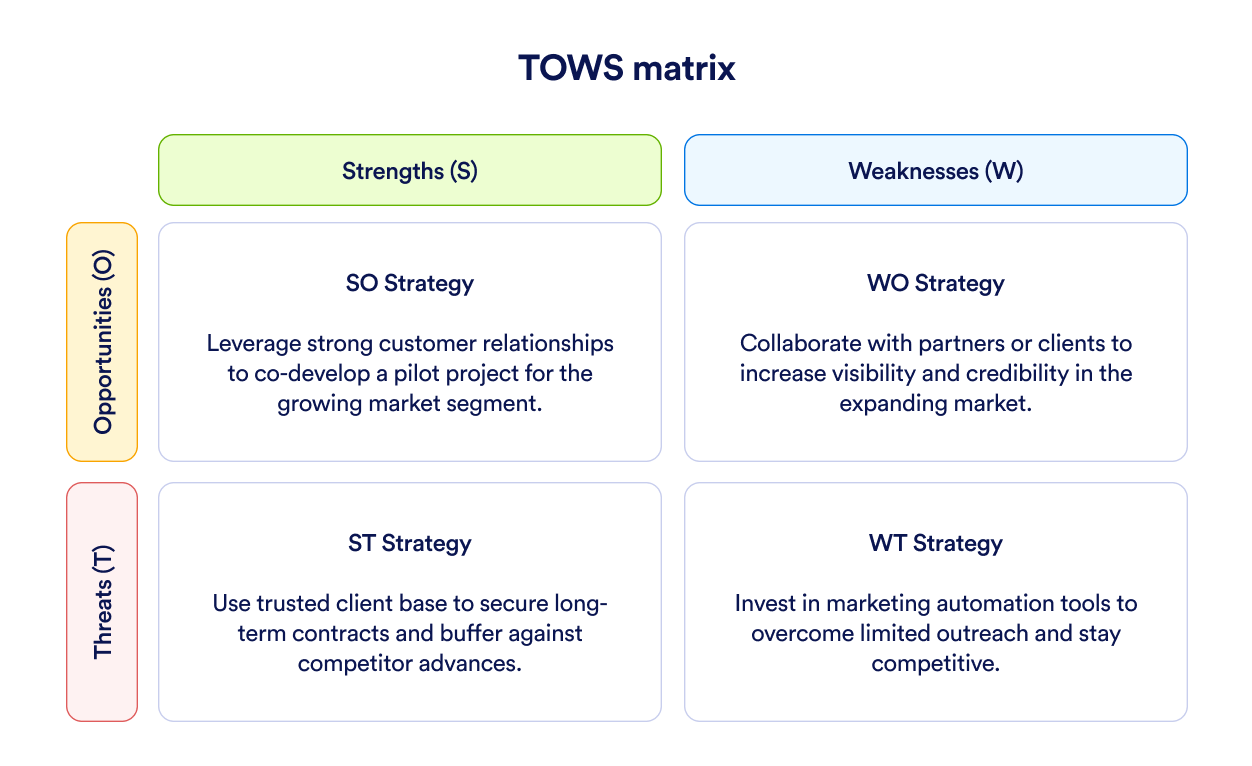
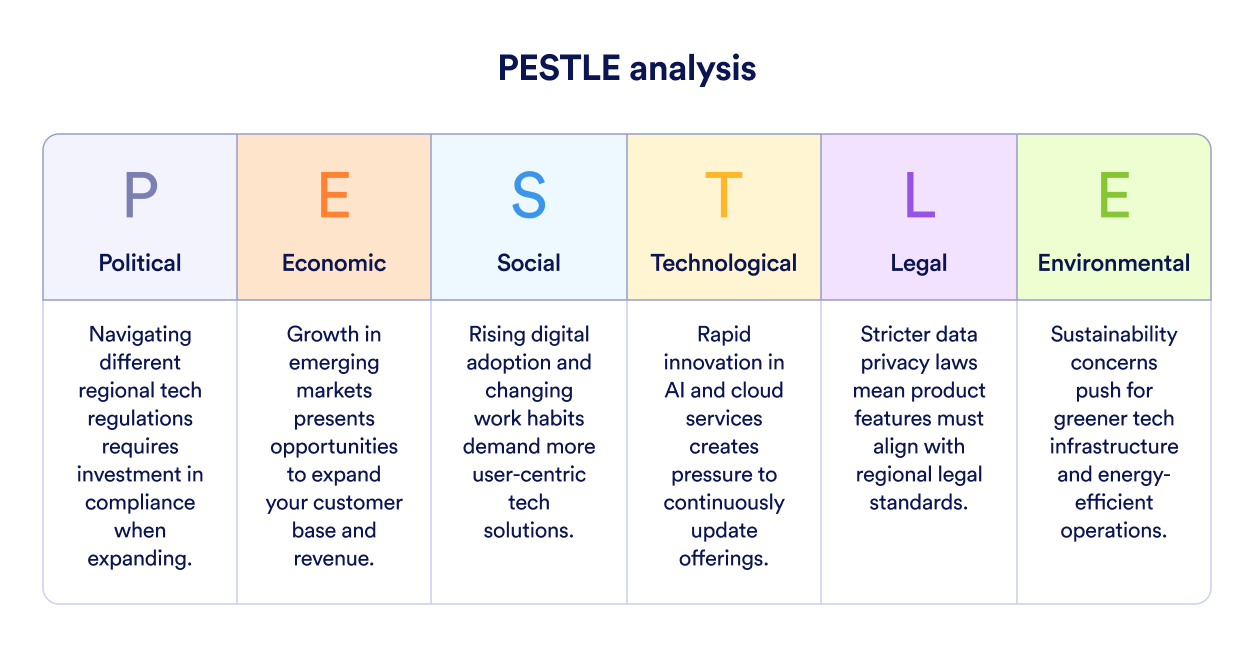
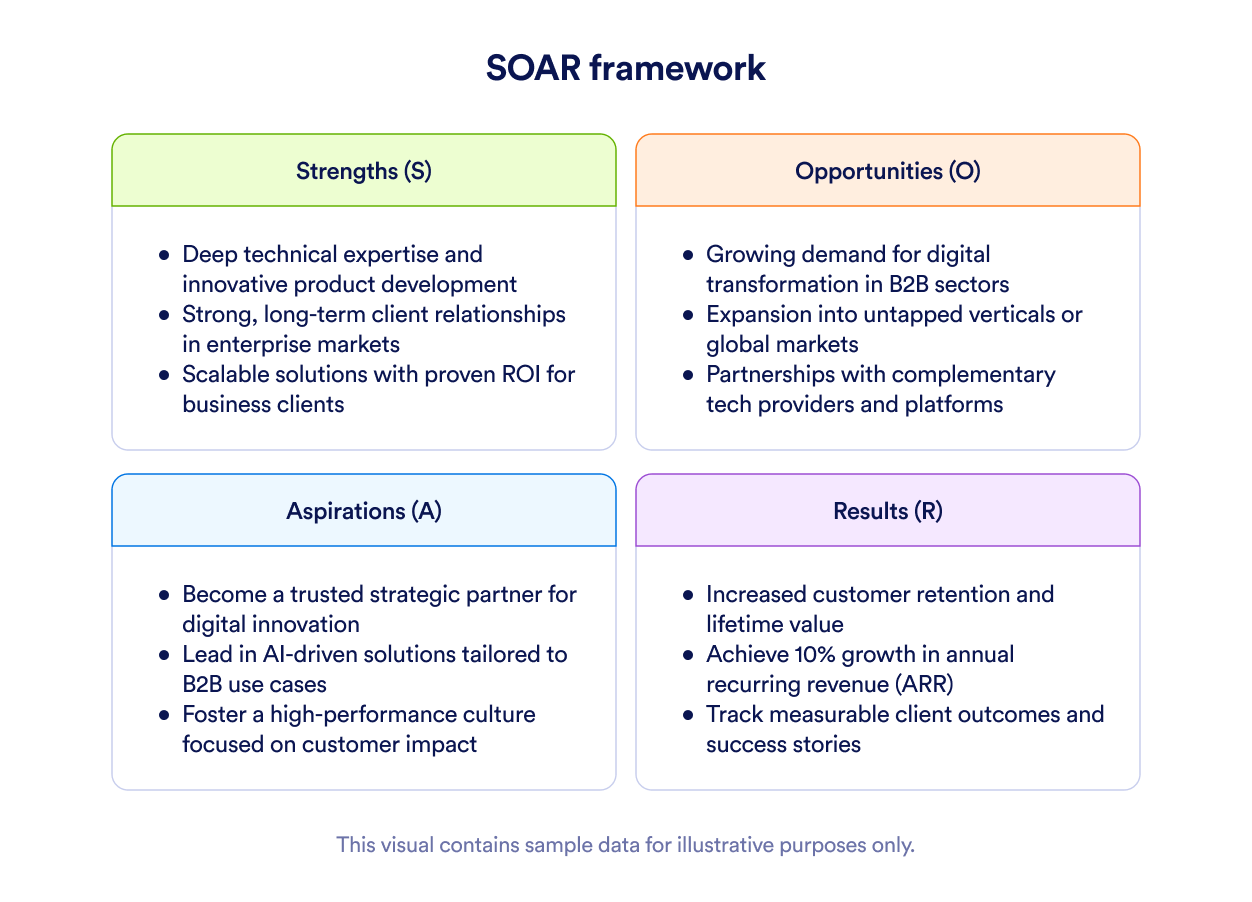

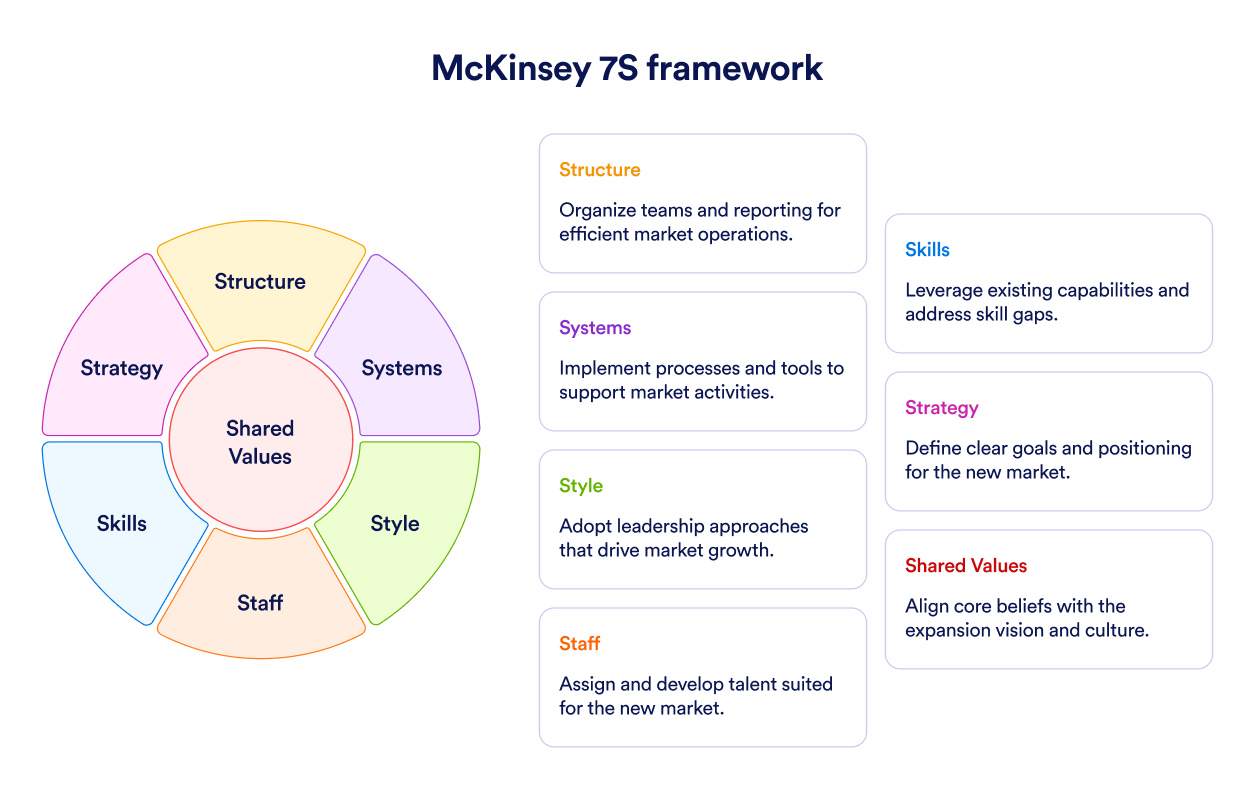

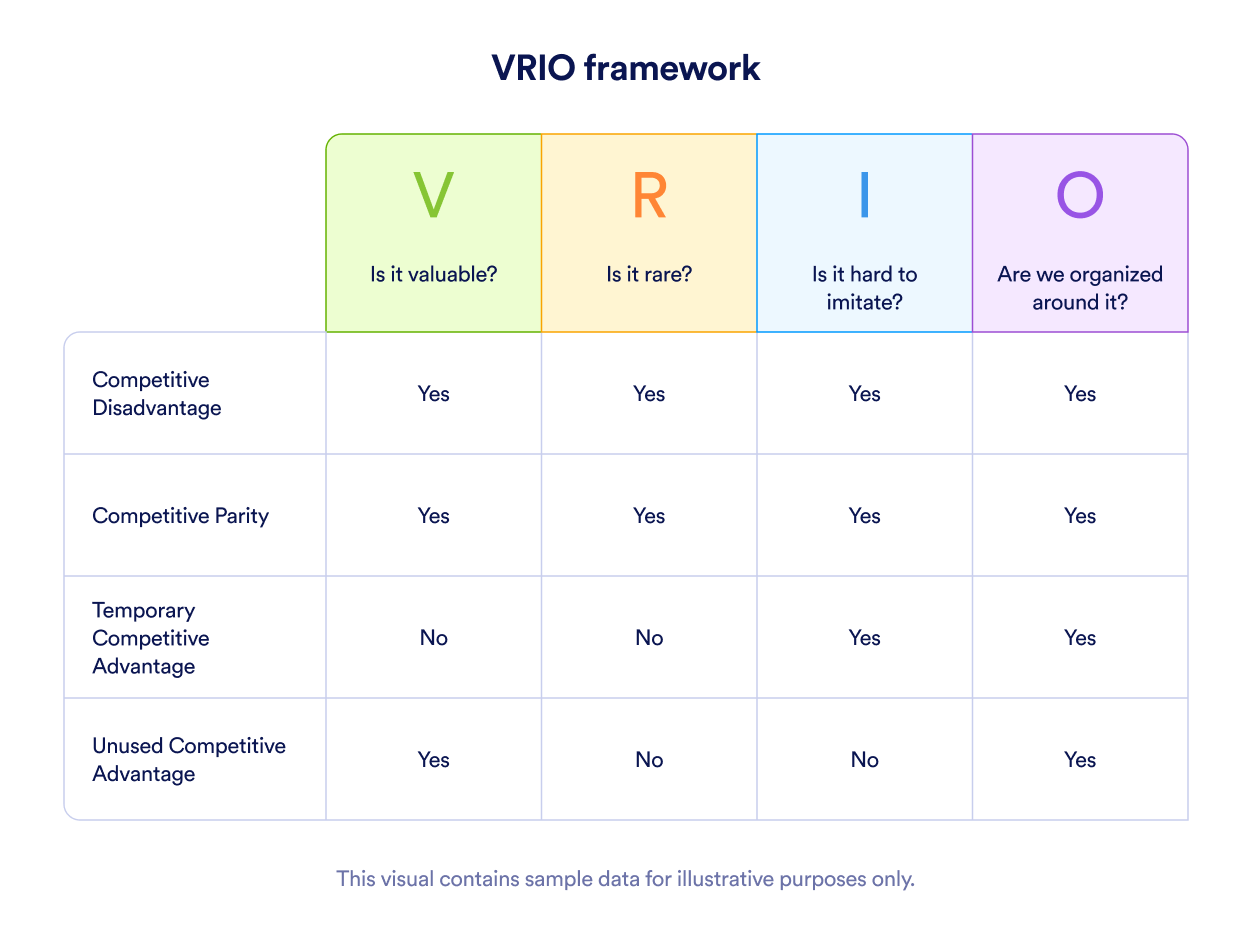
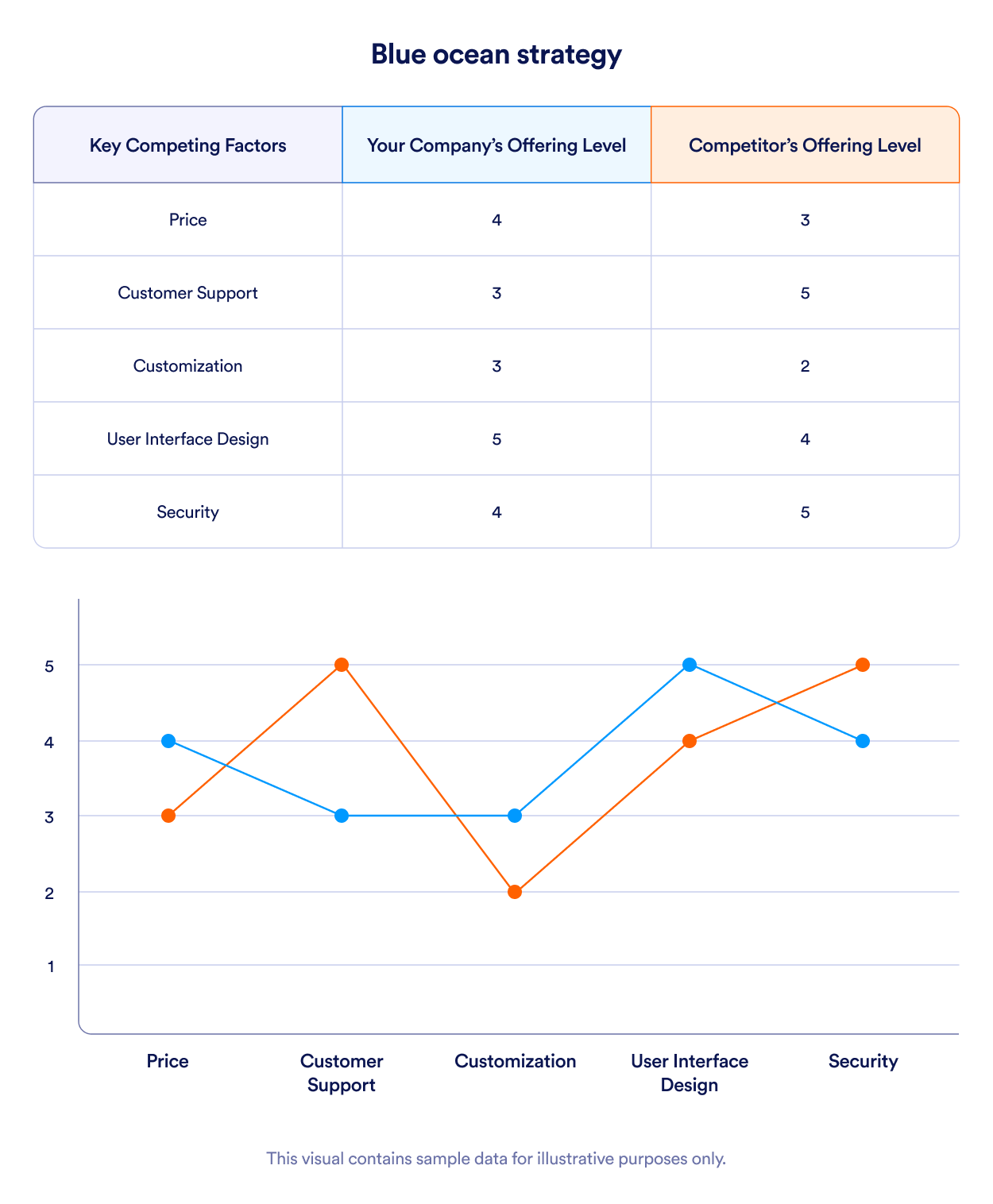
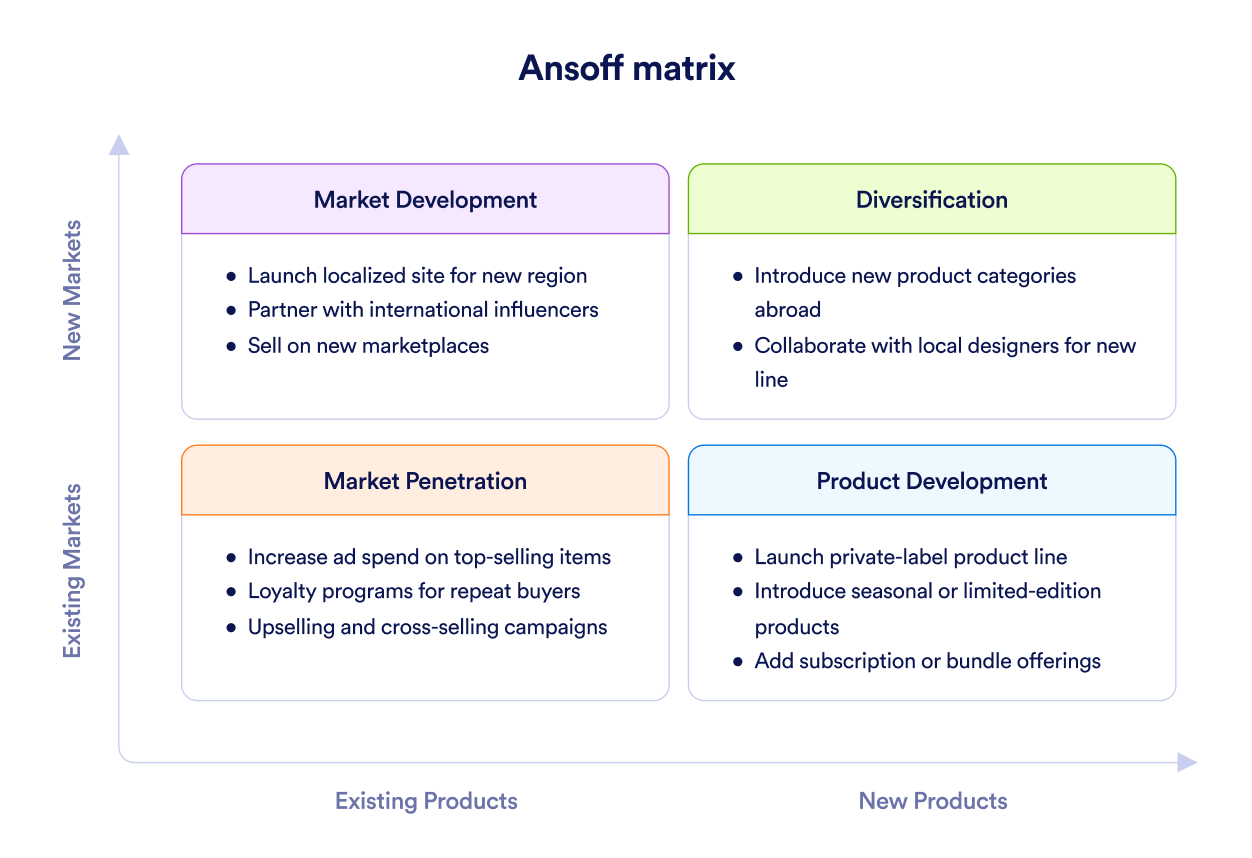




Send Comment: